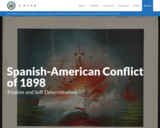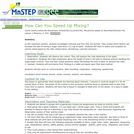
By the 1830s, independence movements reduced Spain’s colonies to Cuba and Puerto Rico in the Caribbean, the Philippines, and several smaller islands in the western Pacific Ocean including Guam, the Marianas, and the Marshall Islands.
At the same time, the United States was increasing its global diplomatic presence and economic power, warning European countries throughout the 19th century from attempting to recolonize countries in the Western Hemisphere.
Meanwhile, the American public read newspaper reports of severe Spanish treatment of revolutionaries in Cuba and the Philippines. Many in the United States wanted to go to war against Spain because of these atrocities, and others wanted to use it as an excuse to expand America’s territory. Some wanted to help Cuba become a free and independent country while some wanted the United States to replace Spain and take control over Cuba, as well as the Philippines, to increase its global military and economic power. All could agree that America’s commercial investments in the regions must be protected.
The United States sent the USS Maine battleship to Havana Harbor to protect its citizens and interests in the Spanish-Cuban conflict. On the night of February 15, 1898, an explosion rocked the ship which eventually sank, killing 266 sailors.
While unclear if this was an attack or accident, the press in the United States blamed Spain immediately, and war between the United States and Spain seemed inevitable.
Could the Spanish keep a stronghold on their last colonies or will the Cuban and Filipino people gain independence?
- Subject:
- History
- Political Science
- Social Science
- U.S. History
- World History
- Material Type:
- Case Study
- Lesson Plan
- Simulation
- Provider:
- National Museum of American Diplomacy
- Author:
- National Museum of American Diplomacy
- Date Added:
- 09/27/2021















